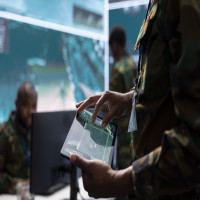What Are the 7 Steps of the Procurement Process

Strong 8k brings an ultra-HD IPTV experience to your living room and your pocket.
The procurement process is the step-by-step method an organization follows to buy goods or services. Whether it’s a private company or a government body handling Defence Procurement, the goal remains the same—buy the right item at the right price from the right source. Below are the 7 key steps of the procurement process explained in a clear and easy way.
1. Identify the Need
The first step is to understand what is needed. It could be a product, service, or equipment. In defence procurement, this might mean anything from military vehicles to security software. The team or department needing the item usually raises a request.
Example: A navy team might request new communication devices.
2. Create a Purchase Requisition
Once the need is identified, a purchase requisition is created. This is an internal document that helps get approval from higher authorities. It includes details like quantity, type, purpose, and estimated cost.
Why it matters: It helps control budget and avoids unnecessary spending.
3. Get Approval
The requisition is sent to the procurement or finance team for approval. If the request is large or related to defence procurement, there might be multiple levels of approval.
Important: Some projects may need government clearance depending on their sensitivity or cost.
4. Find the Right Supplier
After approval, the next step is to look for suppliers. This is called supplier sourcing. The procurement team may:
- Send out tenders or RFPs (Request for Proposals)
- Review supplier past performance
- Check certifications or defence clearances (for sensitive items)
Tip: In defence procurement, only pre-approved vendors are often allowed.
5. Negotiate and Finalize the Contract
Once the supplier is selected, it’s time to negotiate terms like price, delivery time, warranty, and payment method. A formal contract is then created and signed.
Why this step is critical: A strong contract protects both the buyer and seller and sets clear expectations.
6. Receive and Inspect Goods or Services
After the contract is signed, the supplier delivers the goods or starts providing services. The procurement team checks:
- Quantity and quality
- Whether it meets the required specifications
- If there are any damages or missing items
For defence items: Security and testing checks are often stricter.
7. Make Payment and Maintain Records
Finally, once everything is verified, payment is released as per the contract. All documents related to the purchase are stored for audits, reports, or future references.
In government or defence procurement, record-keeping is legally required for transparency and accountability.
Why the Procurement Process Matters
A proper procurement process helps avoid mistakes, delays, or overspending. Whether you're buying office furniture or military-grade equipment, the steps stay similar. The goal is always to get the best value without compromising on quality or timelines.
Let’s look at a few reasons why following these 7 steps matters—especially in defence procurement:
1. Saves Money
By comparing suppliers, negotiating prices, and avoiding rushed decisions, organizations can save a lot of money. In defence projects, even small savings can add up to crores.
2. Reduces Risk
A structured process helps reduce the chance of fraud, poor-quality products, or unreliable vendors. For defence procurement, this is even more important as faulty equipment can lead to serious security issues.
3. Ensures Transparency
Every step in the procurement process is documented, making it easy to track who made what decision and why. This is useful during audits or inspections, especially in government-related projects.
4. Builds Stronger Supplier Relationships
When suppliers know there’s a clear process, they’re more likely to be honest and deliver their best. Over time, this builds trust and long-term partnerships.
Common Mistakes to Avoid in Procurement
Even with a process in place, some common mistakes can slow things down or create problems. Here are a few to watch out for:
- Skipping market research before selecting a supplier
- Not reading contracts properly
- Approving purchases without full need analysis
- Delaying payments, which can affect future deals
- Overlooking after-sales service in the agreement
Being aware of these can help you make better procurement decisions.
Final Tip: Keep Learning and Updating
Procurement isn’t a “one size fits all” system. As rules, technologies, and supplier markets change, your procurement strategy should evolve too. This is especially true for defence procurement, where new standards, security protocols, and supplier qualifications may change frequently.
So, review your procurement process regularly. Make sure your team is trained, your supplier list is updated, and your documentation is complete.
Note: IndiBlogHub features both user-submitted and editorial content. We do not verify third-party contributions. Read our Disclaimer and Privacy Policyfor details.



